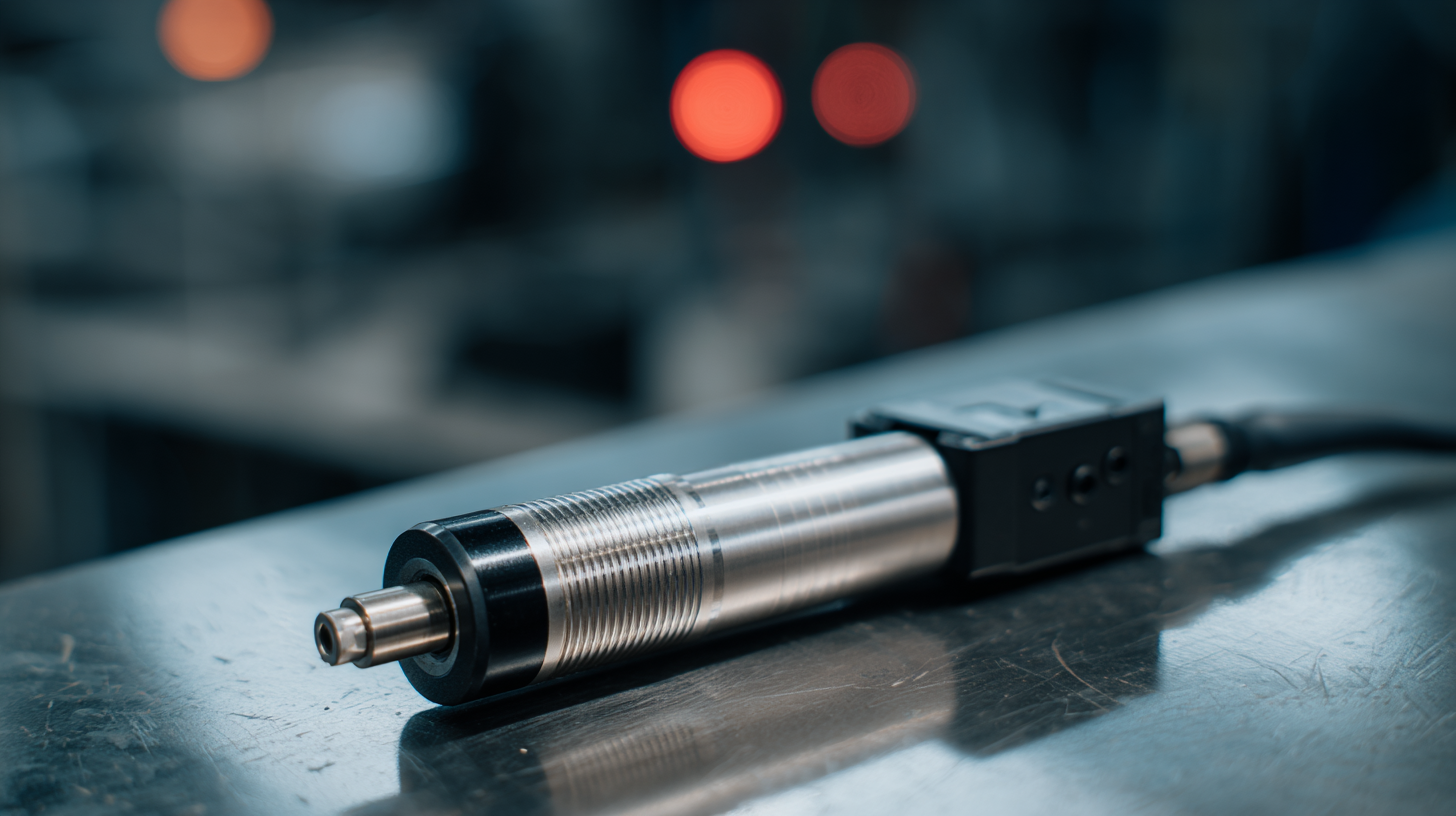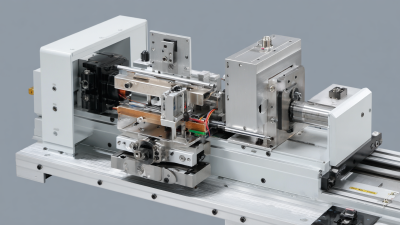Leave Your Message
In the rapidly evolving landscape of manufacturing and assembly, the demand for precision and efficiency has led to the increasing popularity of Portable Ultrasonic Welders. These innovative tools leverage high-frequency sound waves to create strong, reliable bonds in various materials, thus transforming traditional welding methods. According to a recent industry report by MarketsandMarkets, the global ultrasonic welding market is projected to reach an impressive USD 1.8 billion by 2025, growing at a CAGR of 7.5% from 2020 to 2025. This surge is driven by advancements in technology and a growing need for lightweight, portable solutions that can be seamlessly integrated into diverse manufacturing processes.

As industries strive to enhance productivity while maintaining quality, Portable Ultrasonic Welders emerge as a game-changer, providing capabilities that offer both cost savings and improved operational efficiency. The ability to perform welding operations on-site without the constraints of traditional equipment makes these tools invaluable for manufacturers in sectors such as automotive, electronics, and medical devices. The trend towards automation and smart manufacturing further underscores the relevance of these welders, as they minimize labor costs and reduce production times, addressing the need for agility in today's fast-paced market environments. With the right selection of equipment, organizations can harness the power of Portable Ultrasonic Welders to enhance their production capabilities and maintain a competitive edge.
Ultrasonic welding technology has emerged as a crucial method across various industries, providing high precision and efficiency in material joining. This technique utilizes high-frequency ultrasonic vibrations to create a solid-state bond between materials, making it particularly valuable in sectors such as medical devices, automotive, and packaging. Its ability to adhere without additional adhesives or heat reduces contamination, making it highly suitable for the demanding cleanliness requirements of the medical industry.
The global ultrasonic welding systems market is projected to grow significantly, reflecting the rising demand for this advanced bonding process. With a market size expected to reach USD 1,156 million by 2034, driven by a compound annual growth rate (CAGR) of 5.1%, ultrasonic welding will play an increasingly pivotal role in manufacturing strategies. Industries are adopting this technology not only for its precision but also for its efficiency, allowing for faster production cycles and reduced operational costs. As innovations continue to emerge, ultrasonic welding is set to become an indispensable tool in modern manufacturing.
| Model | Power (W) | Frequency (kHz) | Weight (kg) | Application | Price Range (USD) |
|---|---|---|---|---|---|
| Model A | 600 | 28 | 2.5 | Plastic Welding | $800 - $1200 |
| Model B | 800 | 20 | 3.0 | Metal Joining | $1000 - $1500 |
| Model C | 500 | 30 | 2.2 | Textile Welding | $600 - $900 |
| Model D | 700 | 25 | 2.8 | Electronics Assembly | $900 - $1300 |
| Model E | 650 | 22 | 2.7 | Automotive Parts | $700 - $1100 |
When selecting portable ultrasonic welders, there are several key features to consider to ensure optimal precision and efficiency. First, the power output plays a crucial role; higher wattage typically leads to better performance, allowing for faster welding cycles and improved penetration into the materials being joined. It's essential to choose a welder with adjustable power settings to accommodate different materials and thicknesses. Additionally, frequency control is vital since it affects the vibration frequency of the ultrasonic waves, ensuring a strong bond without damaging sensitive components.
Another important factor is the weight and portability of the machine. Look for models that are lightweight yet durable, enabling easy transportation and operation in various settings. Portability often encompasses battery life as well, so long-lasting battery performance is key to uninterrupted workflows. Ergonomic design features, such as comfortable grips and intuitive controls, can significantly enhance usability, making it simpler for operators to achieve consistent results. Finally, consider the availability of support and spare parts, which are crucial for maintenance and prolonged use, ensuring that you get the most out of your investment in a portable ultrasonic welder.
In 2023, the market is filled with various portable ultrasonic welders that cater to different needs in precision and efficiency. The comparative analysis of the top 10 models highlights their unique features and how they stack up against one another. Factors such as weld speed, cycle time, and power output are crucial in determining the best option for specific applications. For instance, some models excel in lightweight design, making them ideal for projects requiring mobility, while others are designed for heavier-duty tasks, offering higher power levels to tackle tough materials.

Moreover, user-friendly interfaces and advanced technology play a significant role in enhancing operational efficiency. Many of the leading units boast digital controls and programmable settings, allowing users to achieve consistent weld quality across various materials. The incorporation of features like automatic amplitude control and fault diagnosis further elevates the usability of these welders. By examining the strengths and weaknesses of each model, industry professionals can make informed decisions that will enhance their production capabilities and meet the demands of their projects in 2023.
When evaluating the performance metrics of portable ultrasonic welders, efficiency and precision stand out as the two most critical factors. Efficiency in ultrasonic welding refers to the energy conversion rate and the speed at which welds are completed. High-quality models can provide rapid weld cycles, allowing operators to complete projects in less time without compromising on quality. Features such as adjustable power settings and advanced control systems can significantly enhance the operational efficiency, making it easier to achieve consistent results across various materials.
Precision in ultrasonic welding is equally vital, particularly in industries where tight tolerances are required. The best portable ultrasonic welders are designed to deliver consistent and repeatable welds, ensuring that components fit together seamlessly. This precision is achieved through sophisticated technology that controls the amplitude and frequency of the ultrasonic waves, allowing for fine-tuning based on the specific materials being welded. As manufacturers strive for higher-quality outputs, investing in ultrasonically efficient tools becomes crucial for maintaining a competitive edge in precision-focused applications.
The landscape of portable ultrasonic welding technology is evolving rapidly, driven by advancements in materials and electronics that enhance precision and efficiency. As industries continue to demand more streamlined and effective bonding solutions, the focus on portability has become paramount. Innovations such as lightweight design, battery-operated units, and enhanced control interfaces are making these tools more accessible to various sectors, from automotive to healthcare. The move towards battery-powered models is particularly significant, as it allows for greater flexibility and ease of use in remote locations, fostering productivity in fields that require on-site assembly.
Market growth in portable ultrasonic welding technology is projected to accelerate, fueled by the increasing adoption in emerging markets and the burgeoning demand for sustainable manufacturing practices. Manufacturers are now prioritizing eco-friendly processes, and ultrasonic welding, known for its minimal waste and energy efficiency, is at the forefront of these trends. Additionally, the integration of smart technologies, such as IoT connectivity and real-time monitoring, is poised to revolutionize how these machines operate, offering users enhanced capability to optimize their workflows and ensure consistent quality. As these trends continue to shape the industry, the future looks promising for portable ultrasonic welders, positioning them as essential tools in modern manufacturing environments.







